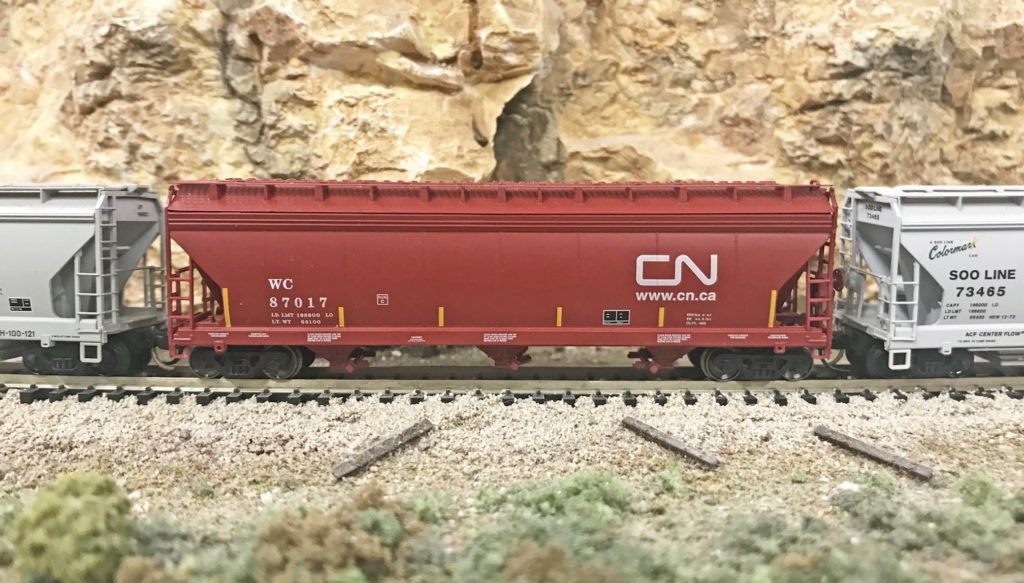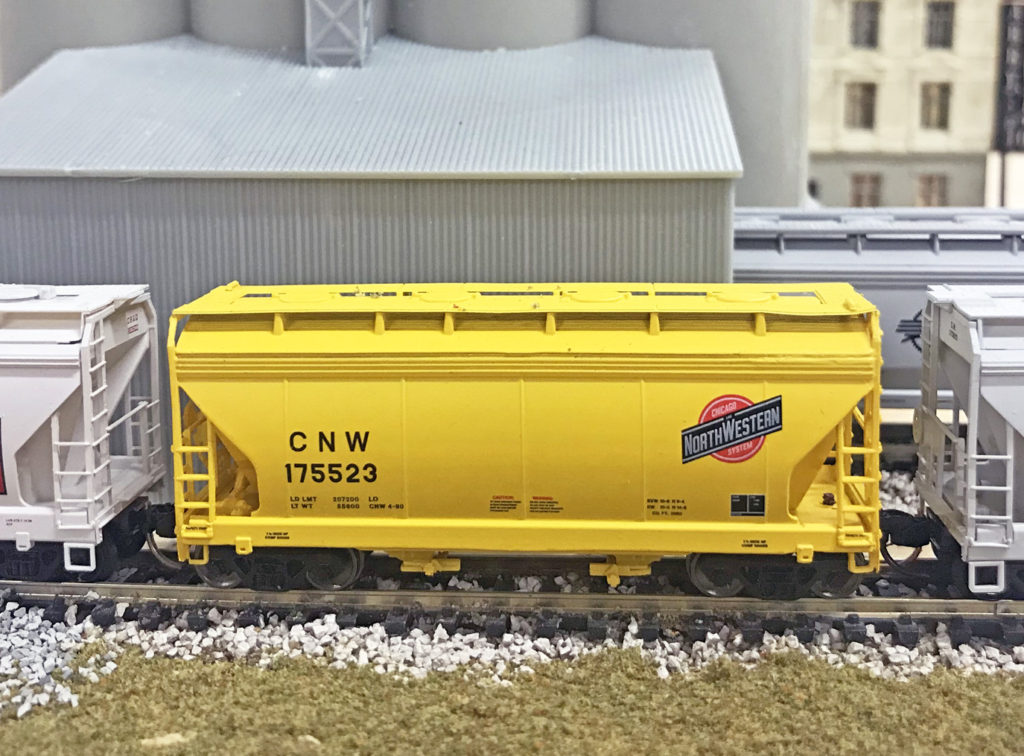All about the community of model railroading and rail enthusiasm
By TIM BLACKWELL/Cowcatcher Magazine
For years, American Car and Foundry Co. was known for its two-bay and three-bay covered hoppers. Thousands were seen throughout the North American rail network beginning in the 1960s, and many are still on the road hauling dry goods that need to be protected from the environment.
American Car and Foundry Co. formed in 1899 in New Jersey when 13 small railroad manufacturers merged. Its first cars were made primarily of wood and transported both passengers and freight. AC&F produced many of Union Pacific’s armour-yellow carbon-steel lightweight passenger cars as well as the Missouri Pacific Missouri River streamliners.
Early hoppers were made entirely of steel, with gondola and flatcars following (although with wood floors), according to the Mid-Continent Railway Museum (North Freedom, WI) website.
The company operated as AC&F until 1955 when it became ACF Industries, Inc., a company that still exists and makes rail cars and rail car components at its plant in Milton, PA. ACF Industries is headquartered in St. Charles, MO.
ACF’s modern-day hoppers were built to haul light and heavy dry goods. Most commonly, three-bays haul grain and plastics while two-bays handle smaller, dense loads like cement and sand.
InterMountain Railway Co. is among several model manufacturers that have produced covered hoppers. The Longmont, CO, company recently released new N and HO runs, including ACF 2,870-cubic-foot two-bay and 4,650-cubic-foot three-bay models.
InterMountain sent N-scale copies of the three-bay CN Wisconsin Central No. 87017 hopper and Center Flow two-bay hopper CNW No. 175523 for review. The models are among the first the company has released since switching builders in China.
The cars fit any model railroad based in the 1960s and later. Both models are evenly painted with sharp detail (including legible build dates). They feature detailed injection-molded bodies, etched-metal parts and appropriate metal trucks with InterMountain wheelsets and magnetic couplers.
Each car comes in six numbers and looks good running with the company’s previous releases.
CN WC No. 87017 three-bay
This car feels sound and solid and is a great performer.
The prototype was built for the Canadian National and leased to the Wisconsin Central Railway in recent years. The WC dates to the 1870s and eventually became a part of the Soo Line, which operated it independently until the early 1960s. The Soo Line, which had bought the Milwaukee Road, divested and new owners brought back the Wisconsin Central in 1987.
On the sample received, the model’s red paint bleeds through slightly on the white “CN” lettering and reporting marks. Detail underneath the car is good, with the exception of the long hinge on the center drop-bottom door being bent.
The etched metal walkways on top achieve the usual high standard on InterMountain freight cars.
The car weighs 1.5 ounces, about a quarter of an ounce heavier than the NMRA standard for a car its size, which is a plus for operability. Coupler height conforms to the NMRA standard.
The car has metal wheels and ran effortlessly on the Cowcatcher’s reborn Whitehurst & Pine Ridge Railroad. Wheels were free rolling, and the car moved well across the layout.
The car sells for $35-$38.

CNW No. 175523 two-bay
The prototype, built in June 1976, is part of the 175500-175599 series of hoppers and measures 38 feet 9 inches by 10 feet 8 inches, according to the Official Railway Equipment Register.
It’s a good-looking model and, like the two-bay, feels solid.
We compared the two-bay hopper to one of the company’s previous releases − MKT No. 439 built by another manufacturing plant − and it held up well with minimal differences. The underbody detail is better on the previous release as a result of finer paint application. Also, plastic flash filled the handles on the brake wheel on the CNW model whereas the MKT model was clean.
The door hatch hinge was bent slightly but comparable detail otherwise.
The car weighed in at 1 ounce, pretty much right on the money with the NMRA standard. Coupler height conforms is appropriate.
The car has metal, body-mount wheel sets and didn’t track as precisely as the three-bay hopper. Our car wobbled slightly going through turnouts but otherwise ran well.
The suggested retail price is about $28.
Both cars live up to InterMountain’s commitment of producing great quality models that are fine representations of the prototype.

Visit our product review page here.